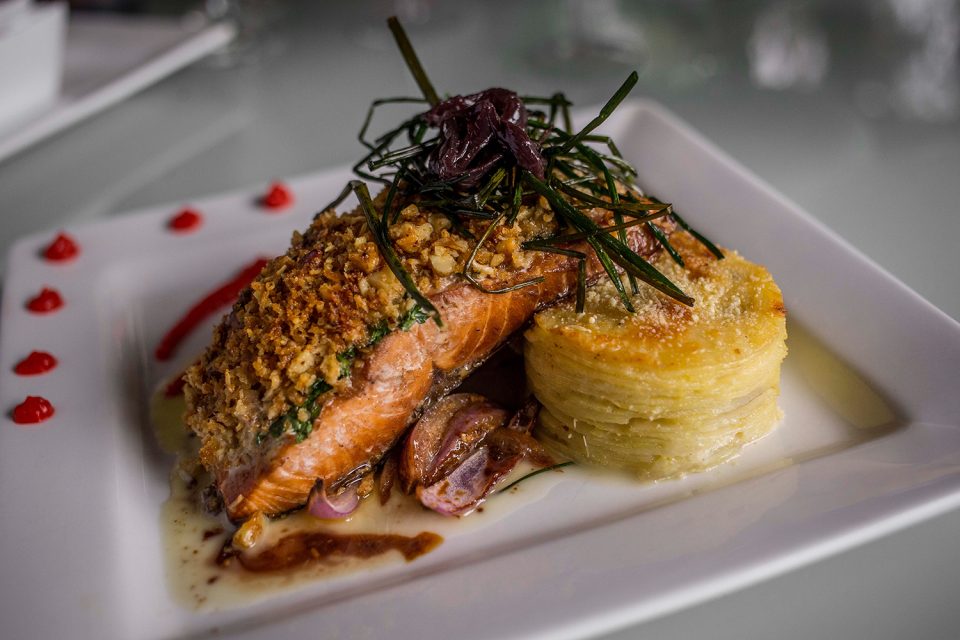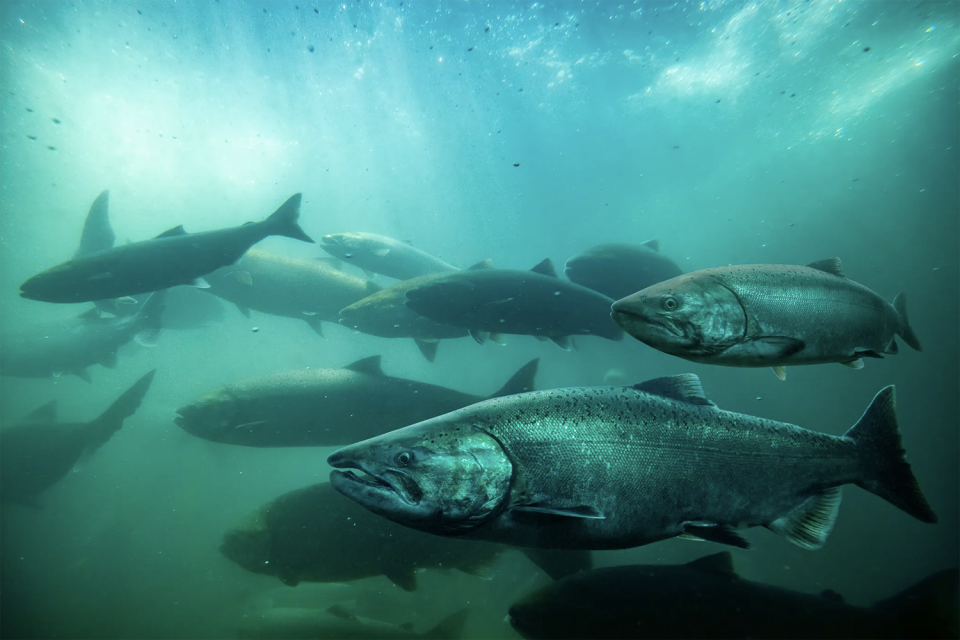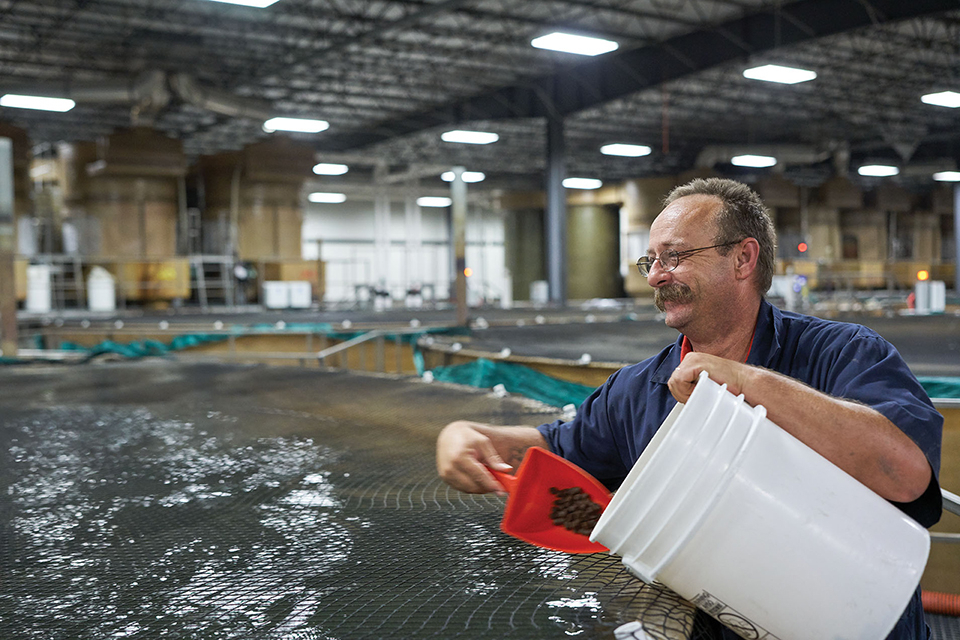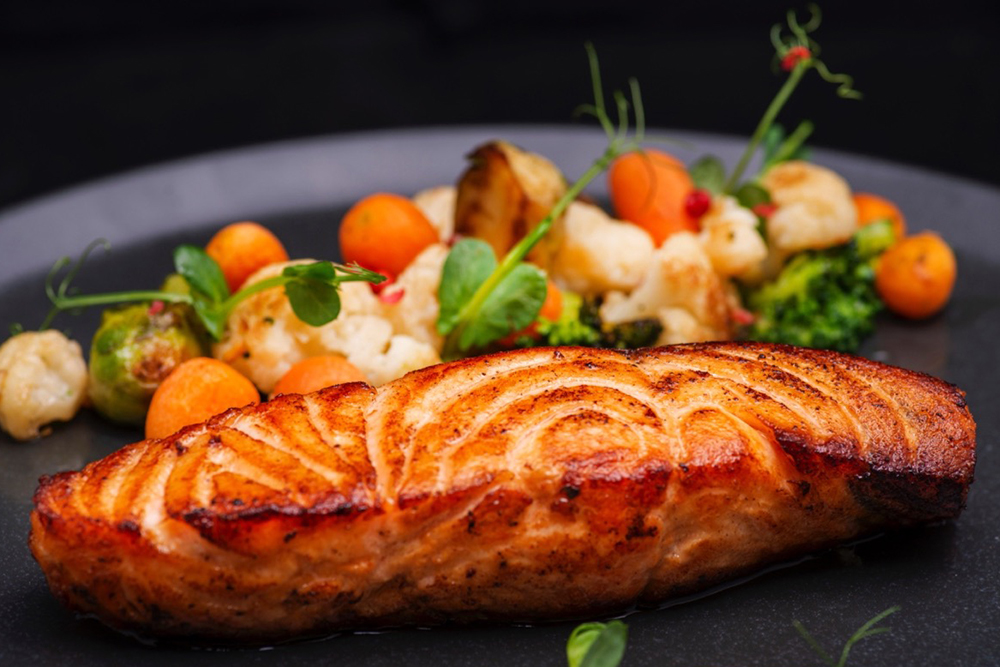AquaBounty’s approach increases salmon production while protecting genetic diversity of wild salmon

Protecting our planet’s biodiversity is a growing challenge as more species are threatened by climate change. Of equal concern is ensuring we have a sustainable food supply for an ever-growing human population. Salmon are a focal point in addressing each of these challenges.
Farmed salmon – both ocean and land-based – are a vital source of high-quality protein as the world’s population increases. However, ocean-farmed salmon can also threaten the genetic diversity of wild salmon if domestic salmon escape into the wild. Biotechnology, like used in AquaBounty Atlantic salmon, offers a path forward to protect species diversity and improve the productivity of aquaculture.
Balancing a sustainable food supply with environmental concerns
According to the Blue Foods Assessment released in 2021, the world is likely to eat twice as much blue food – fish, shellfish and algae that are caught or cultivated in fresh or saltwater – in 2050 than in 2015. The BFA calls for efforts to improve aquatic food production so supply can match demand throughout the world for affordable, nutritious and sustainable blue foods.
To meet this demand, breeding salmon for food production focuses on genetic traits that accelerate growth rates and disease resistance. While every effort is made to prevent fish escapes, the reality is that escapes of domestic salmon raised in sea cages lead to interbreeding with wild salmon, which has the potential to reduce the genetic diversity of the species.
A recent paper published in the Proceedings of the National Academy of Sciences (PNAS) argues that biotechnology can help us address both problems: “Using gene editing to create genetic barriers between farmed and wild aquatic animals is emerging as the most effective approach to preserving aquatic genetic diversity,” argue the authors (Fedoroff, et al, 2022).

AquaBounty combines biotech and land-based farming for physical and biological barriers
AquaBounty is uniquely positioned to address the need for increased salmon production without threatening salmon species diversity because of its combined physical and reproductive containment measures.
AquaBounty salmon are raised in state-of-the-art, land-based farms that use recirculating aquaculture systems (RAS). RAS tanks simulate natural conditions and allow salmon to swim and school naturally.
They also have multiple, redundant layers of protection to preclude escape making RAS, according to Fedoroff, et al (2022), “the most reliable physical isolation technologies currently practiced for reducing the impact of aquaculture on natural ecosystems.” In addition, the authors maintain triploid sterility is the “best biological barrier currently available to minimize interbreeding of wild and farmed aquatic animals.” AquaBounty produces only triploid females.
AquaBounty salmon were genetically engineered one time, 30 years ago, for increased efficiency and sustainability. With increased growth rates, more AquaBounty salmon can be produced in less time to meet the growing demand for a safe, domestic source of healthy protein without risk to wild salmon populations.
Overcoming resistance to biotech in aquaculture
Biotechnology has been widely adopted in medicine as well as in food production. The PNAS authors note the scientific consensus “is that GM food and feed ingredients in wide use today are as safe for humans and agricultural animals as their non-GM counterparts.” Unfortunately, campaigns against them and misinformation have been effective.
Our best chance of saving the genetic heritage of wild salmon – and many other aquatic organisms now being bred for farming – is to create genetic firewalls around the farmed animals, even as we seek to advance the productivity of aquaculture to meet the needs of the still-growing human population. – Fedoroff, et al (2022).
The benefits of biotechnology to sustain our food supply are evident. As we seek to solve the need for a safe, sustainable and growing food supply, while also overcoming threats to species diversity, biotechnology offers us a path forward by making compatible the twin goals of advancing aquaculture and protecting biodiversity.
Author
-

AquaBounty
https://aquabounty.com
Tagged With
Related Posts

From Our Sponsors
AquaBounty’s climate-smart aquaculture helps fish flourish
With optimal water controls, AquaBounty’s state-of-the-art, land-based salmon farms offer several environmental advantages amid climate change risks.

From Our Sponsors
Moving toward a less-polarized GMO debate
Recent study suggests that perceptions of genetically modified food are becoming more favorable, which is good news for biotechnology in aquaculture.

